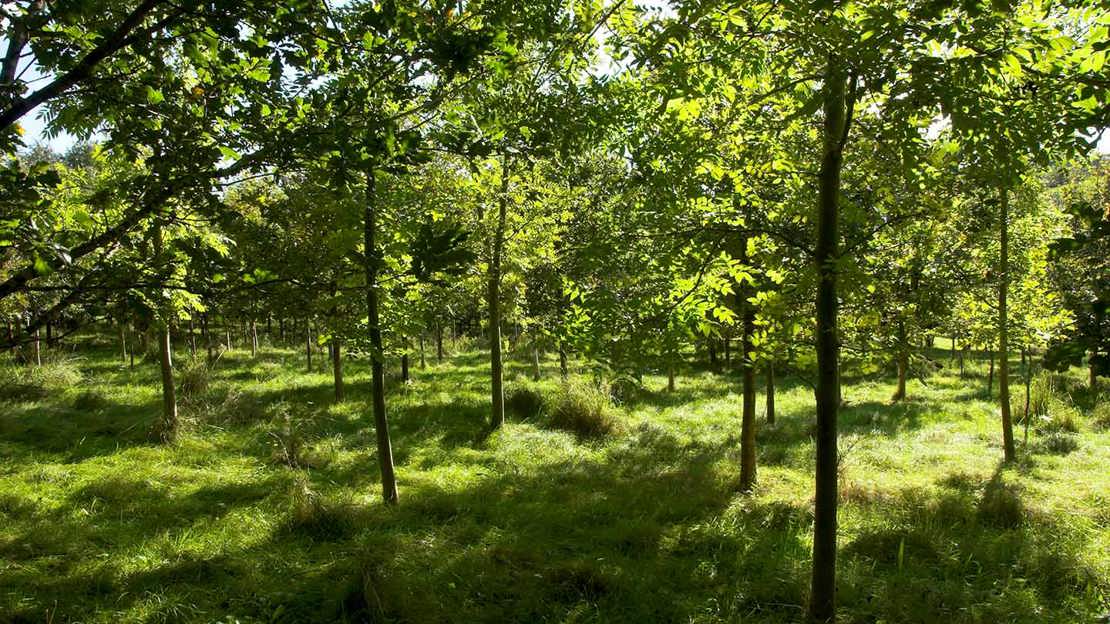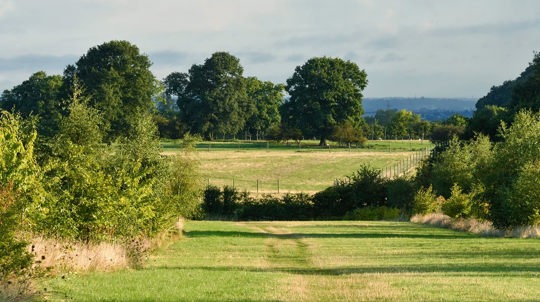Our advisers can offer guidance if potential issues have been identified at your site.
Creating a woodland: planning and design
Growing a wood from scratch is an ambitious undertaking, but thorough planning will put you on the path to success.
Planning ahead
Before planting begins, you need to make sure the site is suitable and no important features will be impacted by your project.
Archaeology
Archaeological features are part of our cultural heritage and must be preserved. It’s your responsibility to check with appropriate bodies how any archaeological remains on the site should be treated. You must follow advice or statutory obligations to protect them.
Contact your council, visit The Association of Local Government Archaeological Officers, or the relevant organisation:
Existing habitats
Not all locations are suitable for planting trees. Undisturbed areas may have become home to a complex mix of species, or rare species which rely on a specific habitat. We do not recommend planting on species rich grassland, wetland or heath.
For advice on biodiversity and species management, contact your local Wildlife Trust, RSPB, Freshwater Habitats Trust or Plantlife.
Watercourses
Woodland has the potential to change the way a watercourse behaves. Before planting by a watercourse or on a floodplain, talk to the relevant agency and follow its guidance:
- Environment Agency (England)
- Natural Resources Wales
- Scottish Environment Protection Agency
- Northern Ireland Rivers Agency or Loughs Agency
Buildings and services
As trees grow they can interfere with electricity cables, building structures or underground pipes so you’ll need to be aware of any under or above ground services and design your planting accordingly, leaving plenty of space. In some cases you may be legally bound to do this as part of a wayleave agreement.
Environmental Impact Assessment
This is a UK-wide system that makes sure due consideration is given to the environmental impacts of woodland creation. Projects smaller than 2ha may be required to submit an EIA application. The agencies responsible for EIA regulations in each country periodically publish updated thresholds and guidance:
Woodland creation sites don’t require planning permission as standard, but check with your local council if you’re unsure.

Designing your wood
Take time to consider what you want from your wood in the years to come. Making sure the design is right for you will help get your project off to the best start and achieve your vision for the future.
Spacing
Your advisor will recommend a planting density that suits your site and goals. This is typically 1,000-1,600 trees per hectare but may be higher in some situations - our team will let you know if this applies to your site. Typical densities include:
- Trees planted every 3 metres = 1,100 trees/ha
- Trees planted every 2.5 metres = 1,600 trees/ha
- Trees planted every 2 metres = 2,500 trees/ha
We recommend planting in wavy lines and varying spacing across your site to balance dense sections with open areas for a natural look and feel. Plant small groups of the same species together to help to reduce competition between different species as they grow.
Shrubs
Your species mix will likely contain 20-30% shrubs such as hazel, hawthorn and blackthorn. We recommend planting most of them around the edge of your site to create a graded woodland edge. This will act as a windbreak and help encourage wildlife.
Glades
Leaving some open spaces within your woodland will encourage different habitats and enhance biodiversity value. A glade is ideal for wildflowers, while planting shrubs around the edge will benefit butterflies, bats and birds.
Footpaths
Including a footpath in your woodland design will help you enjoy the trees as they grow. To create a winding footpath through your trees, miss out a row whilst planting. Footpaths may need occasional mowing to maintain access. If planting for woodfuel, consider routes for extracting materials.
Fencing
If livestock graze nearby, fencing your planting area is essential to prevent tree damage.
Community involvement
Your woodland will impact the local landscape, so consider how it may affect other people in your area. You may want to talk to neighbours about your planting design to avoid future conflicts, hold a planting event for the community or maintain public access in the future.



